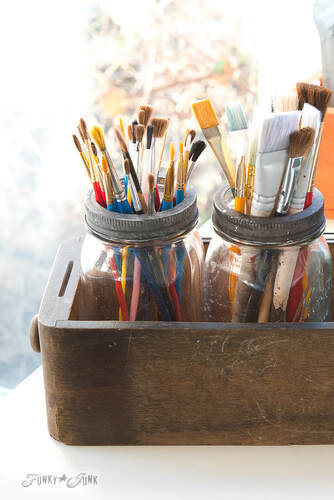INTRODUCTION TO ACRYLICS
LESSON FOUR
LESSON FOUR
All About Your Acrylic Brushes
Taking care of and making marks with brushes- the basics!
POWER POINT ON ACRYLIC BRUSHES
VIDEO on brush demo with paint
How to hold the brush
Wet the brush before dipping into the paint - wipe off with paper towel if necessary
Just put the paint on half way up the bristles - not into the ferrule
Always wash the paint off the brush
Changing colours on your brush
Dry time
Thin and Thick paint
Opacity layers
You can leave your brush in water for a very short time - but too long will ruin the brush bristles.
Clean your brushes with dish soap and water - shape and straighten out bristles when wet
Make different marks with the brush
Wet the brush before dipping into the paint - wipe off with paper towel if necessary
Just put the paint on half way up the bristles - not into the ferrule
Always wash the paint off the brush
Changing colours on your brush
Dry time
Thin and Thick paint
Opacity layers
You can leave your brush in water for a very short time - but too long will ruin the brush bristles.
Clean your brushes with dish soap and water - shape and straighten out bristles when wet
Make different marks with the brush
EXERCISE ONE
YOU WILL NEED
a round, an angle and a flat brush (middle size)
jar of water
your pad of acrylic paper
2 colours of paint
Having watched the video above, now grab a piece of your acrylic paper and start making some marks!
In this exercise you are going to learn how to hold a brush, how much paint to put on your brush, how to start making some marks with the paint and how to clean your brushes.
In this exercise you are going to learn how to hold a brush, how much paint to put on your brush, how to start making some marks with the paint and how to clean your brushes.
Brush shapes and sizes
The good side of that is you don't have to spend a lot of money on brushes. Synthetic, inexpensive brushes are great for acrylic paint! Acrylic paint dries so quickly and moves more stiffly across the canvas than watercolour or oil, so I find my acrylic brushes lose their shape and get worn down faster than my watercolour or oil brushes. Save the expensive sable brushes for oil or watercolour!
As you have seen on your supply list, I have recommend only a few brushes to start with in these shapes - 3 round, 4 flat and 1 angle. As you develop as a painter, you will start to experiment with different brush shapes and sizes to see which best suit your style and the size of paintings that you like to paint. I would be embarrassed to show you the hundreds and hundreds of brushes I have - it may be a bit of an addiction! But really, you need very few to start with.
DIFFERENT COMPANIES USE DIFFERENT SIZE CHARTS
As you have seen on your supply list, I have recommend only a few brushes to start with in these shapes - 3 round, 4 flat and 1 angle. As you develop as a painter, you will start to experiment with different brush shapes and sizes to see which best suit your style and the size of paintings that you like to paint. I would be embarrassed to show you the hundreds and hundreds of brushes I have - it may be a bit of an addiction! But really, you need very few to start with.
DIFFERENT COMPANIES USE DIFFERENT SIZE CHARTS
Acrylic paint is hard on brushes so there are a couple of things you need to know.

